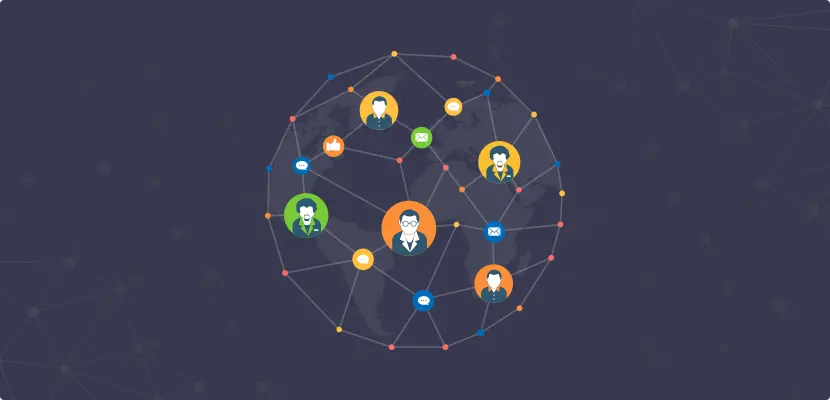80% of customers say the experience a company provides is as important as its products and services. Still, year after year, issues like difficult onboarding, support tickets, expired credit cards lead to an increase in churn and lower customer retention levels.
In fact, every year, businesses around the world lose $62 billion due to bad customer service or poor customer experience. Most of these bad interactions, however, could be easily fixed with the use of Customer Success automation.
Put simply, CS automation helps businesses:
- lower business costs;
- reduce waiting time for customers;
- eliminate human error;
- focus on more pressing, complex tasks.
Like any other feature designed to improve and enhance business activities, Customer Success automation doesn’t come without challenges. Thankfully for beginners, CS professionals who are already using automation tools are willing to share their own experience, so you can stay one step ahead.
We talked to 10 Customer Success Managers who implemented CS automation tools to see how they handle these challenges.
We wanted to find out how they automate Customer Success, the benefits they saw, the issues they encountered, and how they solved them. Here’s what they said:
1. Timely follow-up messages
Using automatic replies on a customer’s preferred channel of communication (WhatsApp, Messenger, email, etc) is a great way of replying to your customers out of your business hours. However, automation cannot cover every single scenario.
So, if your customers expect your follow up to be as quick as your initial reply, that could prove problematic.
Abigail Dodwell, HR Director and Customer Service Advocate at Haro Helpers, tried to solve this issue by including their business hours in the response. “But most people don’t read that far and follow up way too soon, hence receiving the same out of office message again. A vicious circle, if you will.”
We agree that this is not an ideal scenario and could be improved (by providing 24/7 support, for example), but it’s still better than waiting until the next day to reply.
2. Chatbots that cause more customer frustration
Following the previous point, chatbots can also be used to address customer inquiries right away. They can free up time for your Customer Success reps by answering easy, repetitive questions so they can focus on the complex inquiries instead.
All this is great except, just like in the previous example, chatbots also tend to malfunction. Calloway Cook, President of Illuminate Labs, found that, sometimes, “chatbots would respond with an irrelevant answer which would cause additional customer frustration. We’ve disabled all chatbots for now but plan to keep experimenting with them as the software matures.”
Chatbots are ideal for quick, recurring customer support requests. Anything more than that can & should be handled by your customer support & success teams.
3. Making sure each automated process works for each CS rep
Customer Success doesn’t have a one-size-fits-all approach. Similarly, its automation must also be adapted to each CS rep’s workflow.
Flynn Zaiger, CEO of Optimists in Washington DC, uses automation to ensure his customers are satisfied with the service they’re receiving. As his customer base has expanded, the benefits of using automation have become more evident. In terms of business costs, he’s only had to pay to scale his automated services plan – with no need to hire new (human) staff.
Automating internal processes didn’t come without challenges, but he was able to easily address them. “The ability to set up automation requires a unique skill-set, and we’ve found throwing multiple people at the problem makes it a bit more solvable.”
His biggest challenge, however, was finding a process that worked for each team member. “As your company grows and the number of automated processes increases, you need to make sure that you increase the amount of time set aside for Q&A to properly assess that your automation is working for your Customer Success team.”
4. Automatically personalizing offers
Sean Pour, Co-Founder of SellMax, uses automation to ask customers to rate their last interaction with his company. For anything less than 8 out of 10, he also follows up with a “What could we have done better?” question.
Customer Success is important for him as it helps his company stay one step ahead of the competition. Which is why he focuses his resources on gathering customer feedback and implementing it to improve his product.
Because of the fast pace at which his company operates at some automated processes might work differently than intended. This is why he decided to invest more in testing.
“As an example, we use automation to give individuals prices on cars. We are able to generate instant offers based on proprietary data. However, generating those offers is no easy feat as the condition of cars can vary dramatically. This is one challenge we overcame.”
The results quickly showed up. Thanks to automation, he was able to handle more customers, which translated into more revenue generated.
The process still needs some fine-tuning as sometimes customers receive a higher price and they turn down the offer, but Sean says that when you look at how much time SellMax saves, overall, the revenue generated is significantly bigger than before automation was implemented.
5. Automating too early
By automating customer touchpoints, whether they’re designed to activate, educate, or gauge health, you’re able to have a better read on what’s going on than if you were attempting to do everything manually.
Still, when implemented incorrectly, automation can cause more harm. This usually happens when organizations automate a process too early, when they don’t have a clear overview. Without running through a process in advance, you end up with clunky systems that don’t serve you or your customers well.
“The biggest challenge I’ve encountered in startups and companies like SurveyMonkey with millions of users is attempting to take the manual, human prototyping steps out of automation. The trick is always to start more simply than you think it’s necessary,” says Lauren Locke-Paddon, VP of Customer Success VocalVideo.
6. Convincing support reps automation can help
Although Customer Success automation has many benefits, it can also cause a lot of changes for the company. Sometimes, the employees’ first instinct is to resist these changes.
In such cases, it’s important to explain why change is good, why your team should embrace it, and what opportunities come up when automation is introduced to a support department.
Customers are more impatient today than ever. They demand instant, high-quality support, which is almost impossible to offer without automation.
“A major benefit of implementing automation into your Customer Success processes is that it enables you to deliver fast service to your customers, which in turn can boost customer loyalty. A customer that feels they can get help quickly and get their issues solved with minimal effort will be more likely to return in the future,” says Kat Kalmykov, Head of Customer Success Thankful.ai.
7. Lack of human touch
One downside of Customer Success automation, however, is that it makes relationship building more challenging.
“By automating time-consuming, repetitive tasks, you’re able to free up time to do what you’re good at. Customer Success automation is great because it eliminates human errors and minimizes the wait time. But it also excludes the human approach,” says Shiv Gupta, CEO of Incrementors Web Solutions.
Alex Paretski, Knowledge Manager at Itransition, has also faced this problem. His clients were very excited to find out how much potential Customer Success automation holds for cost-efficiency and resource management. However, he soon realized that complete automation could prove detrimental to relationships with customers and revenue long term.
“The crucial step here is to apply automation intelligently, meaning you have to understand which processes need to be automated and when. To figure this out, I would suggest analyzing the characteristics shared by ‘loyal’ customers so you can understand what customer types should be engaged personally and which ones can interact with chatbots.”
8. Solving issues before customers reach out
At Solidguides, Gintaras Steponkus uses Customer Success automation to get a 360-degree view of leads. “Our automated systems gather data from multiple platforms and display a 360-degree view of a business’ potential clients’ journey. It helps us understand their intention and pain points faster than a manual process.”
This process ensures that the data he gathers is error-free and non-polluted. Then, he uses this information to redefine strategies and communicate effectively with customers and improve the conversion rate.
By tracking customers’ navigation patterns, he realized that they contacted the company at the last minute. Although Customer Support served them well, a considerable ratio of lost leads could have been transmuted into conversions.
“A good CSM is also responsible for addressing clients’ issues before they contact us explicitly. So, we implemented the self-serve strategies by making our designs user-friendly, making the payment process more accessible, and extending our FAQs section.”
9. Poor segmentation and prioritization
Last but not least, the area where Customer Success automation can probably bring the most benefits is customer segmentation and prioritization.
Mike Bran, Customer Support Manager of ThrillAppeal, was having trouble evaluating customers. So he decided to use Customer Success Management software, making the activation of customer data and analytics a lot easier for him.
“Since using CSM software, we are driving our business in the future of Customer Success. Cloud software offers a robust set of solutions focused on Customer Success, product experience, revenue optimization, customer data management, and much more. We haven’t yet discovered any issue since the time we are using the software.”
Wrapping up
As these examples show, many CSMs who have already implemented automation successfully are using it as a way to streamline their business and save time and money.
Here are our thoughts on the matter: because customer success automation comes with both benefits and challenges, full automation may not be the way to go.
In our experience, partial automation works best, because you can still save time on manual tasks and reports, you get to do automatic research and track KPIs via Health Scores, but you also maintain a human approach, all while efficiently working to reduce churn.
Custify is a great customer success automation tool that can help you achieve this and more. It’s a smart way of cutting down on manual work, reaching more relevant leads, and catering to their needs as soon as possible.
There’s good, there’s bad and there’s a lot we still don’t know about customer success automation. In the end, you need to weigh and measure the impact of this tactic and determine if it’s the right thing to do for your organization.
Reap the benefits of Customer Success automation: lower business costs, better customer experience, more time for what matters.




